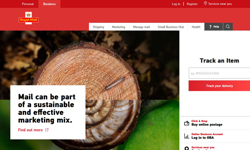
Dovetail’s closure prompts an obvious question “What will the UK subscriptions management market look like in the future?” and this article is my view of the changing landscape.
In the old days, there were three ways of managing subscriptions: In-house systems using self-developed software; in-house systems using off-the-shelf software; and outsourced service bureaux.
B2B and journal publishers selling low volumes of either low or high transaction complexity subscriptions normally used in-house systems. Consumer publishers selling high volumes of low transaction complexity subscriptions normally used service bureaux.
Publishers selling high volumes of high transaction complexity subscriptions didn’t have a natural subscriptions management solution and, over the years, many switched backwards and forwards between in-house systems and service bureaux.
In today’s subscriptions management marketplace, a number of profound changes are taking place:
1. New cloud-based, browser-based, subscription management platforms are now available, removing the requirement for publishers to fund their own, expensive, in-house IT infrastructures.
Digital-only publishers find the above tech developments highly desirable, of course. But the holy grail of a cloud-based, browser-based, subscription management platform which supports both print subscriptions, expiring by issue, and digital subscriptions, expiring by time or by usage, is still not universally available. And this is because some new cloud-based, browser-based, subscription management platforms are lacking in functionality, typically to support print subscriptions or to calculate earned and deferred income, split by paid and unpaid, and accounting for sales taxes and currency exchange rates.
This situation will change, of course, as new cloud-based, browser-based, subscription management platforms develop functionality to support both print and digital subscriptions. And when that happens, the need for two separate subscription management platforms, one for print and the other for digital, will finally be removed.
2. Subscription databases are now closely connected with content management platforms (CMS) for online access and entitlements; marketing databases (CRM) for cross-selling; and eCommerce platforms for online transactions.
The availability of application program interfaces (APIs) enables subscription management platforms to exchange data with other platforms which were previously disconnected or only loosely connected. Selling trials to high-price subs-based information websites is a good case in point as data from previously disconnected sources can now be exchanged in real-time:
• Prospect names, addresses, contact details, call logging information and so on (located in CRM platforms)
• Sales funnel information, success scores and sales performance data (located in marketing automation platforms)
• Website access entitlements during and after trials (located in content management platforms)
• A/B splits, for presenting different subs offers (located in experimentation platforms)
• Website orders and check-out baskets (located in ecommerce platforms)
• Subscription start and end dates and billing functionality (located in subs management platforms)
• Processing multiple payments received from subscription agents (located in subs agent systems)
3. Hybrid subscription management solutions, where publishers run subscriber-facing operations like order entry and customer services, and outsourced service bureaux run back-end processes like labels and month-end closes, will become more available.
This subscription management arrangement is the norm in some continental European countries like Germany and is already provided by a few UK service bureaux. I expect this arrangement will become more popular in the UK, especially for publishers selling high transaction complexity B2B subscriptions, and for publishers with marketing staff wanting to enter and maintain their own promotion codes.
4. More publishers will use ecommerce platforms and marketing databases, populated with subscriber and other customer data, to generate new, non-publishing, revenue streams like holidays and cosmetics (in B2C markets), and training courses and financial services (in B2B markets).
In the old days, cross-sell normally referred to books, binders and back-issues. But that’s all changed now subscription management platforms are inter-connected with marketing databases and ecommerce platforms. Promoting non-publishing products and services to subscribers and directing them to order through ecommerce platforms has never been easier.
And the second holy grail of funding tech developments solely through new revenue streams is now a possibility.
I believe these changes will also take place:
• New suppliers will enter the market, both developers of subscription management platforms and outsourced service bureaux
• The scope of subscription management platforms and service bureaux will increase to cover different activities like subscription sales in other market sectors (entertainment, software as a service, gift boxes etc), events and memberships
• Outsourced service bureaux will also provide outsourced subscription marketing services for their clients
Dovetail’s client management staff were knowledgeable and experienced (and often recruited by publishers) and I hope Dovetail’s best practices will continue to live on through other subscription management suppliers and across the subscriptions market as a whole.












